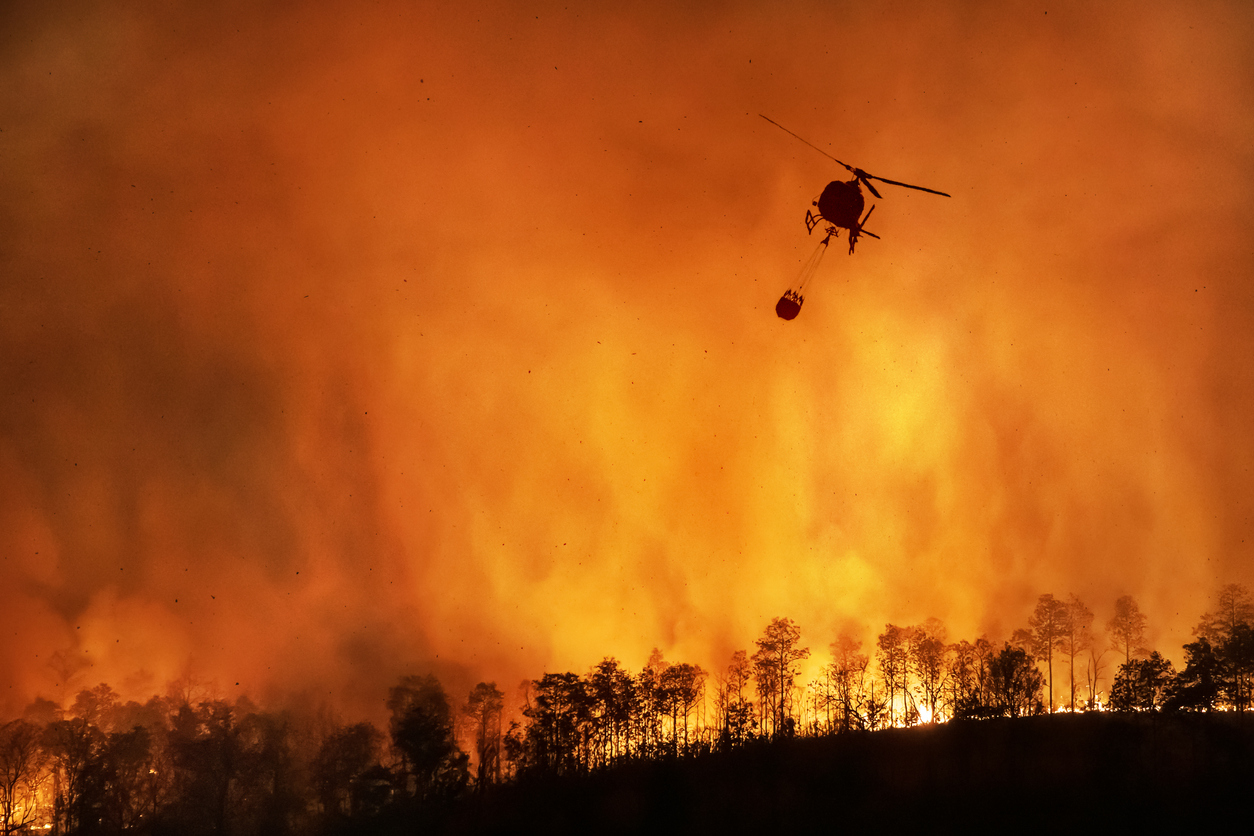
Firefighters often risk their safety during emergency responses. While some risk is inevitable, adhering to safety regulations reduces the risk of death and injury. Insurance agents representing these dedicated first responders need to understand these regulations and promote safe aircraft operations among their firefighting clients.
Mitigating hazards requires advanced planning and expert training, especially for aircraft operations. Battling fires from the air creates dangers for the crew in the aircraft and on the ground. Aviation incidents caused 26% of the 298 wildland firefighting deaths recorded from 2000-2013. Your firefighter clients have many steps they can take to ensure their safety and the safety of others.
Preventing Aviation Accidents When Battling Wildfires
Firefighting aircraft operations typically occur in remote wilderness areas, which heightens the need for safety precautions. While your clients maintain responsibility for adhering to legal requirements, following other practical steps can save lives.
Maintain Constant Communication
Wildfire challenges include poor visibility due to smoke, sudden fire eruptions, and the need to fly at low altitudes for airdrops. Firefighters must remain in constant contact with their supervisors and colleagues during these flights. That means either visual or radio communication to keep informed of changing conditions and any difficulties encountered in the air or land.
Stay Aware of Surroundings
Just because a region is remote doesn’t mean it’s unpopulated. Smoke and cloud cover may obscure individual structures or small housing communities. Pilots need to know if their flight path carries them over residential areas to plan their airdrops accordingly. Water and fire retardants create ground-level hazards, such as slippery and muddy conditions. The force of the airdrop may also damage buildings and vehicles, knock down tree limbs, or dislodge boulders.
Maintain a Safe Altitude
A safe altitude ensures that dropped liquids and gels fall vertically instead of horizontally, reducing impact force on the ground. Correct airdrop altitude improves firefighter and civilian safety while increasing the effectiveness of the materials. Helicopters need to be especially careful about altitude because the wind from the rotors can fan flames at or above treetop height.
Clear People Out of the Drop Zone
Fire retardants and water also create hazards for firefighters on the ground. If those substances hit a firefighter directly, the force may be sufficient to cause injury or death. It can also cause indirect harm by felling trees, dislodging other debris, or turning sharp tools into projectiles. As a precaution, ground crews should be trained to protect themselves if they end up in the path of an airdrop with no time to evacuate.
In Conclusion
Awareness is the key to keeping firefighters safe during aircraft operations. Work with your fire department insurance clients to ensure they do everything possible to keep themselves and others safe.
About Provident Fire Plus
At Provident Fire Plus, we offer custom tailored packages to best protect firefighters and volunteer firefighters. We understand the risks that emergency response teams are subjected to on a daily basis, and have worked to serve these dedicated professionals for over 87 years. For more information about our products and policies, we invite you to contact our experts today at (855) 201-8880.

